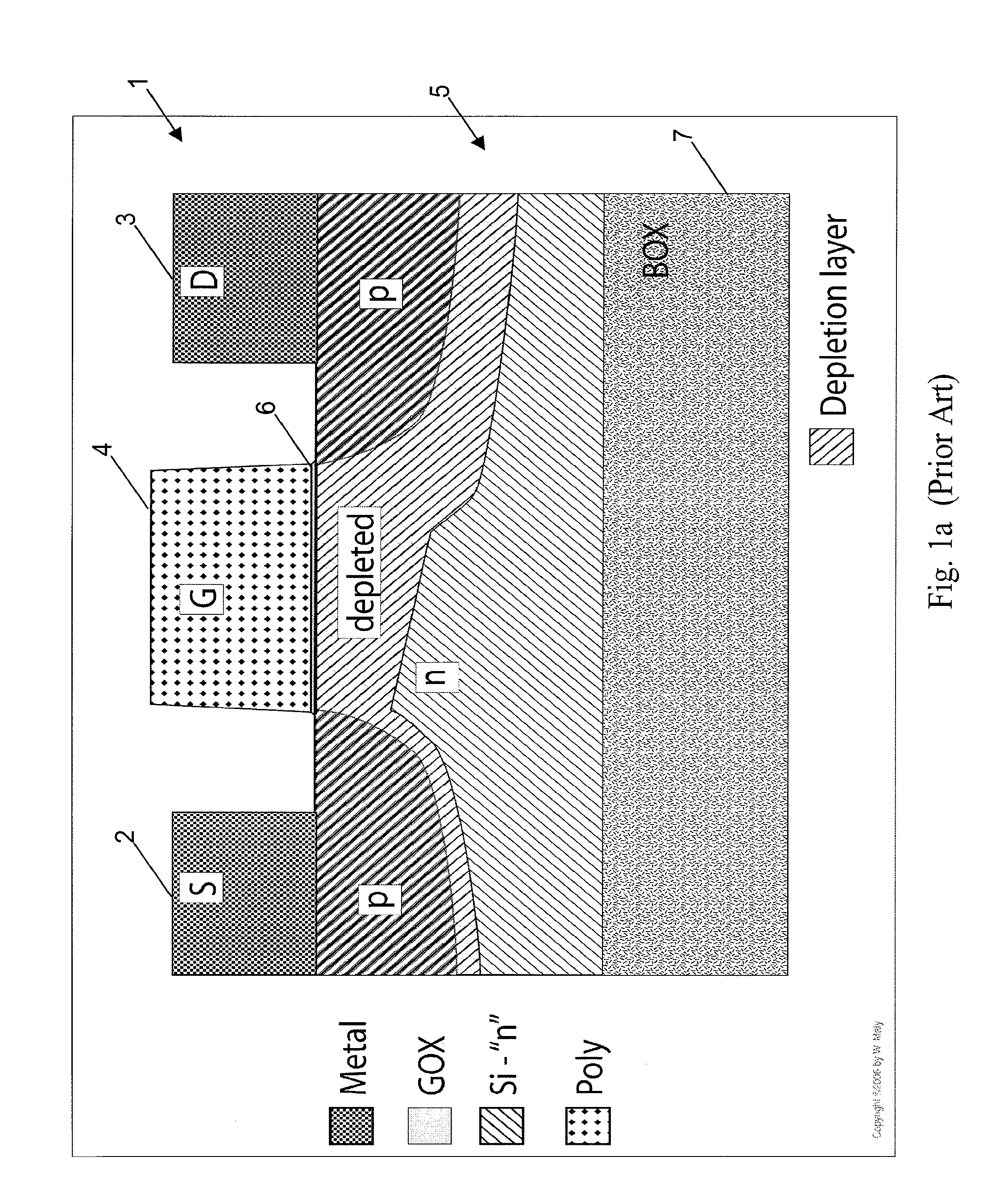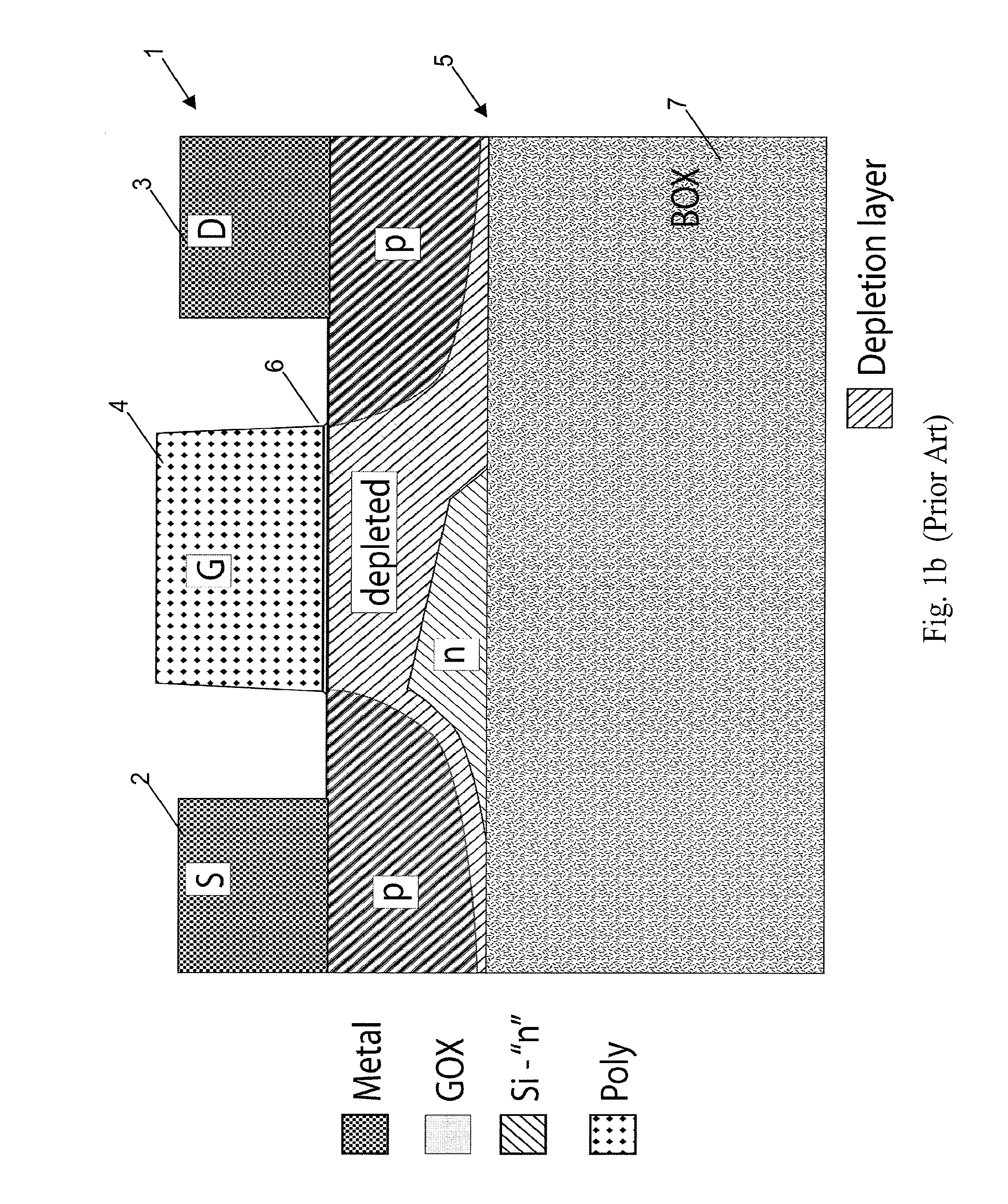Integrated Circuit Device, System, and Method of Fabrication
a technology of integrated circuits and fabrication methods, applied in the field of integrated circuits, can solve the problems of increasing the cost of lithography. and other fabrication processes and tools, and reducing or eliminating the effect of optical proximity correction
- Summary
- Abstract
- Description
- Claims
- Application Information
AI Technical Summary
Benefits of technology
Problems solved by technology
Method used
Image
Examples
second embodiment
[0095]The second embodiment is a complimentary VeSFET circuit using a TIG (“two independent gate”) configuration. In other words, each device includes two gates which are independently controlled. In the illustrated embodiment the right gate on each device is separately controlled (VPC and VNC) to provide for an “adjustable threshold voltage” (“ATV”) which can be independently controlled for each of the two devices. The adjustable threshold voltage may be static (“SATV”) or dynamic (“DATV”), and in some embodiments the adjustable threshold voltages may be the same for all transistors, or it may be different. The adjustable threshold voltages may be used, for example, to change the operational characteristics of the circuit. For example, at certain times the device may operate as a low-leakage device with a high threshold voltage, and at other time the device may operate as a high-speed device with a low threshold voltage. In some embodiments the device may operate in an intermediate...
third embodiment
[0098]The third embodiment is a complimentary VeSFET circuit using a SSSG (“source-shorted second gate”) configuration. In other words, the right side or “second gates” on each device are tied to the source of each device.
[0099]The fourth (far right) embodiment is a complimentary VeSFET circuit using a DSSG (“drain-shorted second gate”) configuration. In other words, the right side or “second” gates on each device are tied together and to the output. In this embodiment the output of the circuit also controls the signal on the right side or “second” gates.
fifth embodiment
[0100]The fifth embodiment is a complimentary VeSFET circuit using a FLSG (“floating second gate”) configuration. In other words, the right side or “second” gates are floating. In this embodiment, both devices are also PTV (“programmable threshold voltage”) devices and ATV (“adjustable threshold voltage”) devices. In other words, the second gates can be provided with a charge to program or adjust the threshold voltage of the particular device. The floating gates may be charged, for example, with an e-beam or with other means. In some embodiments the floating gates can be discharged, for example with the application of ultraviolet light, and then re-charged.
[0101]As used herein, PTV will refer to the process of programming a threshold voltage of a device to achieve a desired characteristic from the device. For example, one or more devices may be programmed to be in particular states, such as to route current in a particular path, to perform logic operations on signals, or to perform ...
PUM
 Login to View More
Login to View More Abstract
Description
Claims
Application Information
 Login to View More
Login to View More - R&D
- Intellectual Property
- Life Sciences
- Materials
- Tech Scout
- Unparalleled Data Quality
- Higher Quality Content
- 60% Fewer Hallucinations
Browse by: Latest US Patents, China's latest patents, Technical Efficacy Thesaurus, Application Domain, Technology Topic, Popular Technical Reports.
© 2025 PatSnap. All rights reserved.Legal|Privacy policy|Modern Slavery Act Transparency Statement|Sitemap|About US| Contact US: help@patsnap.com



